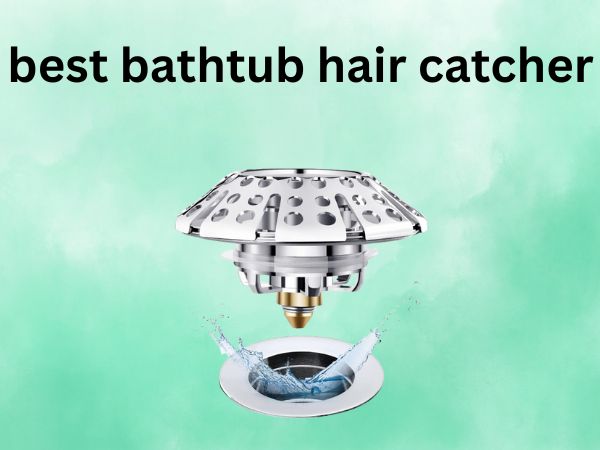Are Toilet And Shower Drains Connected?
Toilet and shower drains are connected in most residential plumbing systems, allowing wastewater to flow through the same main drain line. Did you ever wonder whether the drainpipes from your toilet and shower are connected?
Well, in most residential plumbing systems, these drains are actually connected to each other. This connection allows the wastewater from both the toilet and the shower to flow through the same main drain line in your home. Understanding how these drains work together is important for maintaining proper plumbing functionality.
In this article, we will explore the connection between toilet and shower drains and how they function in a typical plumbing system. So, if you’re curious about how everything works down the drain, keep reading!
Table of Contents
Understanding Drain Systems
Are Toilet And Shower Drains Connected?
How Do Drain Systems Work?
- Drain systems are an essential part of our homes’ plumbing, responsible for removing wastewater and preventing the accumulation of unpleasant odors.
- These systems operate through a network of pipes and connected fixtures, including toilets, showers, sinks, and washing machines.
Components Of A Drain System
- Drain systems consist of various components that work together to ensure proper drainage. These include:
- Drain pipes: These are the main conduits that carry wastewater away from our homes. They are typically made of durable materials like pvc or cast iron.
- Traps: Traps are curved sections of pipe that retain a small amount of water, creating a barrier to prevent sewer gases from entering our living spaces. They are found beneath sinks, showers, and bathtubs.
- Vent pipes: Vent pipes allow air to enter the drain system, helping to maintain proper water flow and prevent pressure build-up. These pipes usually extend through the roof of a house.
- Cleanouts: Cleanouts are access points in the drain system that allow for easy maintenance and clearing of any blockages that may occur.
Importance Of Proper Drainage
- Proper drainage is crucial to maintaining the functionality and cleanliness of our homes. Here’s why it matters:
- Preventing water damage: If wastewater doesn’t drain properly, it can lead to leaks, mold, and structural damage to our homes.
- Avoiding foul odors: Without effective drainage, unpleasant sewer odors may permeate our living areas, creating an uncomfortable environment.
- Promoting hygiene: Adequate drainage ensures that wastewater is swiftly removed, reducing the risk of bacteria and germs lingering in our living spaces.
- Protecting the environment: Properly functioning drain systems prevent the contamination of water sources, preserving the environment.
Understanding drain systems is essential for homeowners in order to maintain a healthy and functional living space. By comprehending the workings and components of drain systems, individuals can ensure proper drainage and avoid potential issues such as water damage, odors, and hygiene-related concerns.
Regular maintenance and prompt attention to any drainage problems can help keep our homes safe and comfortable.
Similarities Between Toilet And Shower Drains
Are Toilet And Shower Drains Connected?
Shared Purpose Of Removing Waste Water
Toilet and shower drains serve the common purpose of efficiently removing waste water from our homes. Both drains play a crucial role in maintaining sanitation and cleanliness within the household. Understanding the similarities between these two drains can help homeowners better comprehend the inner workings of their plumbing systems.
Common Materials Used In Drain Pipes
When it comes to the materials used in drain pipes, both toilet and shower drains are typically constructed from similar substances. Pvc (polyvinyl chloride) is a commonly used material due to its durability, resistance to corrosion, and cost-effectiveness. Cast iron and abs (acrylonitrile butadiene styrene) are also frequently utilized in drain pipe construction, reflecting their ability to withstand the demands of waste water disposal.
Key points:
- Pvc, cast iron, and abs materials are commonly used in constructing toilet and shower drain pipes.
- These materials are chosen for their durability, resistance to corrosion, and affordability.
Connection Points In The Plumbing System
Toilet and shower drains are integrated into a complex plumbing system that includes various connection points. These connection points allow waste water to flow from different fixtures, such as toilets and showers, towards the main sewer line. Both toilet and shower drains are connected to plumbing vents, which serve to regulate air pressure within the system and prevent sewer gases from entering the home.
Additionally, these drains connect to the main waste stack, which carries waste water to the sewer or septic system.
Key points:
- Toilet and shower drains connect to plumbing vents to regulate air pressure and prevent sewer gases from entering the home.
- They also connect to the main waste stack, which transports waste water to the sewer or septic system.
By understanding the shared purpose, common materials, and connection points of toilet and shower drains, homeowners can gain a deeper appreciation for the intricate workings of their plumbing systems. This knowledge not only empowers them to make informed decisions about maintenance and repairs but also fosters a greater understanding and appreciation for the convenience and comfort provided by these essential fixtures.
Differences Between Toilet And Shower Drains
Toilet and shower drains are essential components of any plumbing system, but are they connected? In this blog post, we will explore the differences between toilet and shower drains and delve into their unique features and specific plumbing requirements.
Variation In Drain Pipe Size And Type
- Toilet drains typically have a larger diameter pipe compared to shower drains. The larger size is necessary to handle the solid waste that toilets dispose of.
- Shower drains, on the other hand, have a relatively smaller diameter pipe, as they primarily deal with liquid waste.
- The difference in pipe size is crucial to ensure the proper flow and disposal of waste in each fixture.
Unique Features Of Toilet And Shower Drains
- Toilet drains are designed with a trap, which is a curved section of piping that retains water. This water barrier prevents unwanted sewer gases and odors from entering the bathroom.
- In contrast, shower drains don’t usually have a trap. Instead, they rely on a p-trap located further down the plumbing system to prevent sewer gases from entering the home.
- Another unique feature of toilet drains is the presence of a flange, which connects the toilet to the drainpipe. This flange creates a watertight seal, preventing leaks and ensuring efficient waste disposal.
Specific Plumbing Requirements
- Toilet drains require a more direct and secure connection to the main plumbing system due to their functionality and use. It is essential to have a sturdy and well-anchored toilet flange to ensure a proper seal and avoid leaks.
- Shower drains, on the other hand, need to be installed with proper slope and alignment to ensure efficient drainage. This ensures that water doesn’t pool or accumulate in the shower area, preventing potential damage to the floor or walls.
Understanding the differences between toilet and shower drains is important for homeowners and plumbing professionals alike. By recognizing the variation in drain pipe size and type, unique features, and specific plumbing requirements, you can ensure the proper functioning and longevity of these essential fixtures in your home.
The Connection Between Toilet And Shower Drains
Are Toilet And Shower Drains Connected?
When it comes to the plumbing system in your home, you might be wondering about the connection between toilet and shower drains. Are they linked in any way, or do they operate independently? Understanding the relationship between these two essential fixtures can help you better comprehend the inner workings of your plumbing system and potential issues that may arise.
Let’s explore the connection between toilet and shower drains.
How Are They Connected In A Plumbing System?
In a typical plumbing system, both toilet and shower drains are connected through a shared main drain line. Here’s how they are connected:
- The toilet drain is connected to the main drain line through a curved pipe called the toilet trap. This trap prevents odors from coming back up into the toilet bowl and creates a water seal that stops air and gases from entering your home.
- The shower drain, on the other hand, connects directly to the main drain line without a trap. The water from the shower flows directly into the drain and through the main drain line.
Shared Main Drain Line
The main drain line is a crucial component that connects all the drains in your house, including the toilet and shower drains. It acts as a transportation system to remove wastewater and sewage from your home. Here are a few key points about the shared main drain line:
- The main drain line is typically located beneath the ground or within the walls of your house.
- It is responsible for channeling all the wastewater to the municipal sewer system or septic tank.
- It is important to ensure that the main drain line is properly sized and free of any blockages to prevent backups and potential damage to your plumbing system.
Impact Of One Drain On The Other
It’s important to note that while the toilet and shower drains are connected through the main drain line, they can also have an impact on each other. Here’s how:
- Issues with one drain, such as a clog or blockage, can potentially affect the flow of water in the other drain. For example, a clogged toilet drain may cause the water to back up into the shower drain, leading to slow drainage or even water overflow.
- Similarly, a slow-draining shower may indicate a blockage in the main drain line, which can also affect the functioning of the toilet drain.
Toilet and shower drains are connected through a shared main drain line in a plumbing system. Understanding this connection can help you identify and address potential plumbing issues more effectively. Proper maintenance, regular inspections, and promptly addressing any problems can help ensure the smooth functioning of both your toilet and shower drains.
It’s essential to consult a professional plumber if you encounter persistent issues or need assistance with your plumbing system.
Frequently Asked Questions For Are Toilet And Shower Drains Connected?
Are Toilet And Shower Drains Connected?
Yes, toilet and shower drains are connected to the same plumbing system in most residential buildings.
How Does The Plumbing System Connect Toilet And Shower Drains?
The plumbing system uses a series of pipes and fittings to connect the toilet and shower drains, ensuring proper waste disposal.
Can I Experience Plumbing Issues If Toilet And Shower Drains Are Connected?
Yes, if there is a blockage or clog in one drain, it can affect the other drain, leading to potential plumbing issues.
What Are The Potential Problems Caused By Connected Toilet And Shower Drains?
Common problems include slow draining, foul odors, overflowing toilets or showers, and backflow from one drain to the other.
How Can I Prevent Problems With Connected Toilet And Shower Drains?
Regular maintenance, such as using drain strainers, avoiding flushing non-flushable items, and professional inspections, can help prevent issues.
Can I Fix Plumbing Problems With Connected Toilet And Shower Drains On My Own?
For minor issues, you can try using a plunger or drain cleaner. However, major problems should be addressed by a professional plumber.
Conclusion
To summarize, it is clear that toilet and shower drains are connected in most residential plumbing systems. The interconnectedness of these two drains serves to efficiently transport wastewater from both sources to the sewer or septic system. By sharing a common system, they are able to streamline the process and prevent water backup issues.
Understanding the connectivity between these drains can help homeowners better maintain their plumbing systems and troubleshoot any problems that may arise. It is important to note that while there may be instances where the drains are not directly connected, they still share a connection through the main plumbing stack.
This connection ensures proper drainage and prevents the mixing of wastewater between the two sources. Overall, having a clear understanding of the relationship between toilet and shower drains can contribute to a well-functioning plumbing system in your home.


